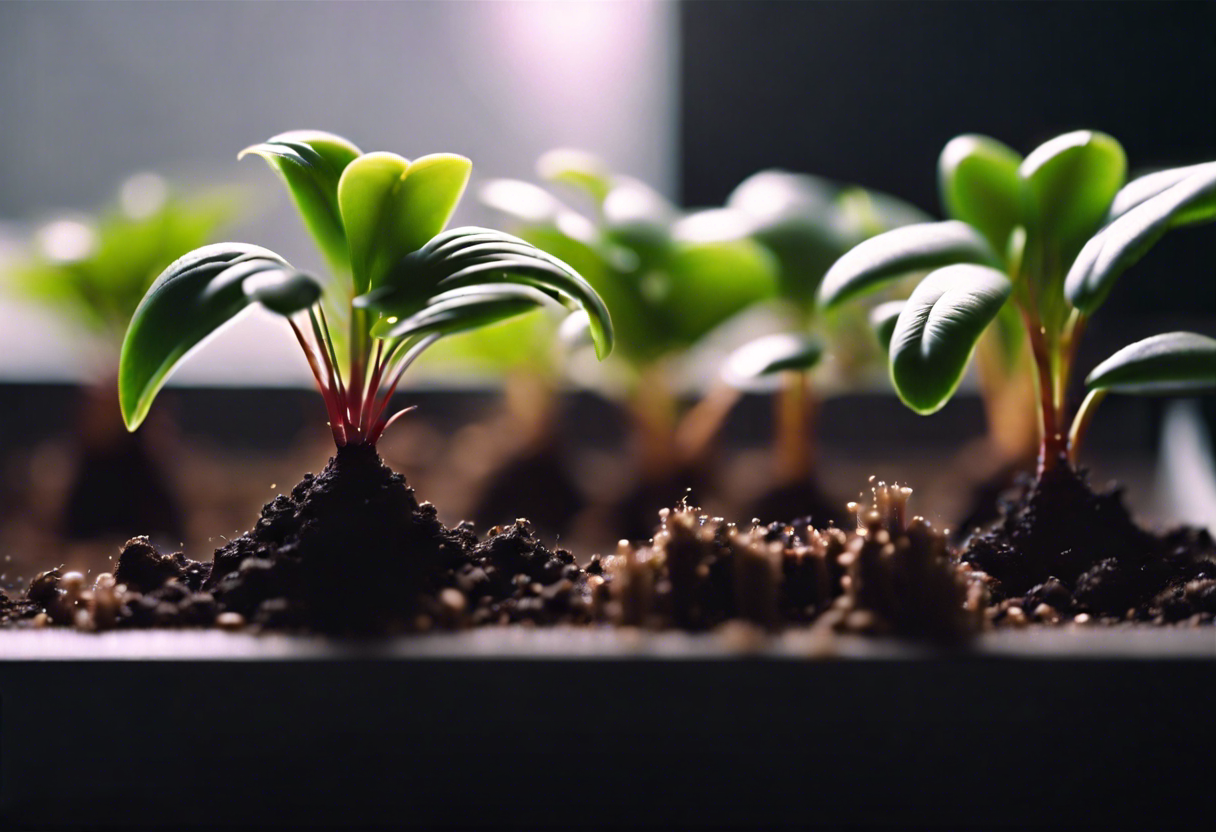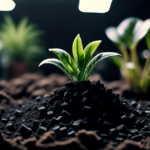The Importance of Aeration for Houseplant Soil
Proper aeration is vital for the health and well-being of houseplants. Plants rely on a well-structured soil that allows air to circulate around their roots. When soil becomes compacted or lacks sufficient air pockets, it can lead to a variety of issues that impact the growth and overall vitality of houseplants.
One of the main benefits of good soil aeration is that it promotes root respiration. Roots require oxygen to carry out essential functions such as nutrient absorption and energy production. When soil becomes compacted, the available oxygen in the root zone decreases, leading to poor root respiration and stunted growth.
In addition to oxygen supply, aeration plays a crucial role in water drainage. When soil becomes dense, water tends to accumulate around the roots, causing them to become waterlogged. This excessive moisture restricts the movement of air in the soil and can lead to root rot, fungal diseases, and other issues. By ensuring proper aeration, excess water can drain freely, preventing waterlogging and maintaining the right balance of moisture in the root zone.
Aeration also helps to create a favorable environment for beneficial soil organisms. Microorganisms such as bacteria, fungi, and earthworms contribute to the breakdown of organic matter, nutrient cycling, and overall soil health. These organisms require oxygen to thrive and carry out their essential functions. By providing adequate aeration, you create a habitat that supports the growth and activity of these beneficial organisms, promoting a healthy and vibrant soil ecosystem.
There are several ways to improve soil aeration for houseplants. One common technique is to use a well-draining potting mix that contains ingredients like perlite or vermiculite. These additives help to create air pockets in the soil, allowing for better circulation of oxygen. Another method is to incorporate organic matter such as compost into the soil. Organic matter improves soil structure, making it looser and more receptive to air movement.
Proper aeration is crucial for houseplant soil as it promotes root respiration, aids in water drainage, and creates an optimal environment for beneficial soil organisms. By incorporating aeration techniques such as using well-draining potting mix and organic matter, you can ensure the long-term health and vitality of your houseplants.
Signs of Poor Soil Aeration in Houseplants
Proper soil aeration is essential for the health and well-being of houseplants. When the soil becomes poorly aerated, it can negatively impact the growth and vitality of your indoor plants. Understanding the signs of poor soil aeration can help you take the necessary steps to rectify the issue and ensure your plants thrive.
One common sign of poor soil aeration is waterlogged or compacted soil. When the soil becomes compacted, it prevents air circulation, making it difficult for plant roots to access oxygen. This can lead to root suffocation and eventually result in stunted growth or even plant death. Additionally, waterlogged soil can cause root rot, as excessive moisture encourages the growth of harmful fungi and bacteria.
Inadequate drainage is another telltale sign of poor soil aeration. When the soil does not drain properly, excess water can accumulate, leading to similar issues as compacted soil. Soggy soil not only deprives plant roots of oxygen but also creates a favorable environment for the growth of pests and diseases.
Wilting and yellowing leaves can also indicate poor soil aeration. Inadequate oxygen supply to the roots can cause nutrient deficiencies, resulting in unhealthy plants. As the roots struggle to absorb water and nutrients effectively, the leaves may start to wilt and turn yellow. If left unaddressed, this can lead to further decline and eventual death of the plant.
Another sign to watch out for is the presence of foul odors emanating from the soil. Poorly aerated soil can become anaerobic, promoting the growth of anaerobic bacteria that produce unpleasant smells. If you notice a strong, rotting odor emanating from your houseplant’s soil, it is likely an indication of poor soil aeration.
The presence of pests such as fungus gnats or root mealybugs may suggest inadequate soil aeration. These pests thrive in moist environments, such as waterlogged or poorly drained soil. If you notice an increase in pest activity around your houseplants, it is essential to assess the aeration levels of your soil.
Ensuring proper soil aeration is crucial for maintaining healthy houseplants. If you notice any of these signs of poor soil aeration, it is important to take action promptly. Implementing appropriate aeration techniques and using aeration amendments can help improve the air circulation in your houseplant soil, providing your plants with the oxygen they need to thrive.
Improving Aeration Techniques for Houseplant Soil
Good aeration is vital for maintaining healthy houseplants. When the soil is well-aerated, it allows for better root development, nutrient absorption, and water drainage. This, in turn, promotes overall plant growth and reduces the risk of root rot and other soil-related issues. There are various techniques you can employ to improve the aeration of your houseplant soil. Let’s explore some of them.
1. Using Well-Draining Soil: Using a well-draining soil mixture is the first step in improving aeration for your houseplants. Soil types such as peat-based mixes or those containing perlite, sand, or vermiculite allow for better airflow and prevent water from pooling around the roots.
2. Adding Organic Matter: organic matter, such as compost or well-rotted manure, into the soil helps improve its structure and porosity. This, in turn, increases aeration and allows the roots to access oxygen more efficiently.
3. Avoiding Compacted Soil: Compacted soil restricts the movement of air and water through the root zone. Regularly loosening the soil with a fork or a small hand tool helps prevent compaction and allows for better aeration.
4. Using Aeration Amendments: Aeration amendments, such as perlite, vermiculite, or pumice, can be added to the potting mix to enhance aeration. These lightweight materials create air pockets in the soil, improving oxygen exchange and water drainage.
5. Proper Watering Techniques: Overwatering is a common cause of poor soil aeration. It is important to water your houseplants thoroughly, but ensure that the excess water drains out properly. Avoid leaving pots sitting in water-filled saucers, as this can lead to waterlogged soil and reduced aeration.
6. Pruning Roots: Over time, houseplant roots may become root-bound or excessively dense, restricting proper airflow. Periodically checking and pruning the roots can help improve aeration and maintain optimal root health.
7. Using Soil Amendments: soil amendments like coco coir or coarse sand can enhance the soil’s ability to retain moisture while still allowing for adequate aeration. These amendments help strike a balance between water-holding capacity and airflow within the soil.
8. Reducing Mulch Thickness: Mulching is beneficial for retaining soil moisture, but if it is too thick, it can impede aeration. Ensure that the mulch layer is thin and not packed tightly to allow for proper air circulation.
By incorporating these aeration techniques into your houseplant care routine, you can ensure that your plants have the optimal environment for healthy growth. Remember to choose well-draining soil, use aeration amendments, and practice proper watering techniques to maintain good soil aeration. Ultimately, well-aerated soil will lead to vibrant houseplants that thrive in their indoor environment.
Benefits of Using Aeration Amendments in Houseplant Soil
Aeration amendments play a crucial role in maintaining healthy houseplant soil. They improve the quality of the soil, provide better oxygen flow to the roots, and promote overall plant growth and vigor. By incorporating aeration amendments into your houseplant soil, you can reap several benefits that will help your plants thrive.
One of the key benefits of using aeration amendments is enhanced drainage. When soil becomes compacted, water tends to pool on the surface, leading to root rot and other moisture-related issues. Aeration amendments such as perlite or vermiculite help create air pockets in the soil, allowing excess water to drain away efficiently. This prevents waterlogging and ensures that the roots receive the right amount of moisture, promoting healthy growth.
Aeration amendments also improve the oxygenation of houseplant soil. Roots require oxygen to function properly, and compacted soil restricts the flow of air. By adding aeration amendments, you create pathways for oxygen to reach the roots easily. This ensures that the roots have access to the necessary oxygen levels, promoting optimal respiration and nutrient uptake.
Furthermore, aeration amendments help prevent soil compaction. This is especially beneficial for houseplants that require frequent repotting. As the soil settles and compacts over time, it becomes harder for the roots to grow and expand. aeration amendments prevents soil compaction, allowing the roots to spread naturally and establish a strong root system. This results in healthier, more vigorous plants.
In addition to these benefits, aeration amendments aid in nutrient retention and release. They create a porous structure in the soil, which helps retain essential nutrients and prevent them from leaching out with excessive watering. The amendments also improve the soil’s cation exchange capacity, allowing it to hold onto vital nutrients and release them gradually to the plants’ roots. This ensures that the plants have a steady supply of nutrients, leading to robust growth and vibrant foliage.
Using aeration amendments in houseplant soil also promotes beneficial microbial activity. The presence of air pockets created by these amendments creates a favorable environment for beneficial microorganisms to thrive. These microorganisms help break down organic matter, releasing additional nutrients into the soil and enhancing its overall fertility. This creates a healthy ecosystem within the soil, benefiting the plants and promoting optimal plant health.
Incorporating aeration amendments into houseplant soil offers numerous benefits. From improved drainage and enhanced oxygenation to preventing soil compaction and promoting nutrient retention, aeration amendments ensure the overall health and vitality of your houseplants. By using these amendments, you can create an ideal growing environment for your indoor plants and enjoy lush, thriving greenery in your home.
Common Mistakes to Avoid When Aerating Houseplant Soil
Proper aeration is crucial for maintaining healthy houseplants. However, there are some common mistakes that people make when aerating the soil, which can hinder the growth and well-being of their plants. Being aware of these pitfalls and avoiding them can help ensure that your houseplants thrive.
One common mistake is overwatering the plants. While water is essential for plant growth, excessive watering can lead to waterlogging the soil and deprive the roots of oxygen. It is important to water your houseplants in moderation and allow the soil to dry out slightly between waterings. This ensures that the roots receive enough oxygen and prevents the development of waterlogged conditions that are detrimental to plant health.
Another mistake is using the wrong type of soil for your houseplants. Some soils retain moisture excessively, leading to poor aeration and root rot. It is recommended to choose a well-draining soil mix specifically formulated for houseplants. These mixes often contain materials such as perlite or vermiculite, which help improve aeration by increasing the pore space in the soil.
Improperly preparing the soil before planting is also a common error. It is important to loosen the soil and break up any clumps before potting your plants. This allows for better root penetration and encourages healthy growth. Additionally, compacted soil can restrict the movement of air and water, leading to poor aeration and nutrient uptake.
Neglecting to regularly aerate the soil is another mistake that can negatively impact houseplants. Over time, the soil can become compacted, reducing its ability to provide adequate oxygen to the roots. To prevent this, it is recommended to aerate the soil periodically by gently loosening it with a fork or a hand tool. This helps to create channels for air and water to penetrate the soil, promoting root development and nutrient absorption.
Using the wrong-sized pots or containers is also a common error that affects soil aeration. If the pots are too small, the roots can become cramped, leading to poor aeration and hindered growth. On the other hand, using pots that are too large can result in excess soil moisture, which can suffocate the roots. It is important to choose pots that are appropriately sized for your houseplants to ensure proper soil aeration.
Avoiding these common mistakes when aerating the soil for your houseplants is crucial for their overall health and thriving growth. By maintaining proper watering practices, using well-draining soil, preparing the soil adequately, regularly aerating the soil, and choosing appropriate pot sizes, you can ensure that your houseplants receive the necessary oxygen for their roots to flourish. Remember to give your plants the best environment possible, and they will reward you with vibrant, healthy foliage.
Conclusion
Proper aeration is of utmost importance for maintaining healthy houseplant soil. Without adequate air circulation, plant roots can suffocate and become susceptible to a variety of issues. Recognizing the signs of poor soil aeration, such as yellowing leaves or wilting plants, is essential in addressing the problem and implementing appropriate solutions.
There are several techniques that can be employed to ensure sufficient aeration in houseplant soil. One effective method is regularly loosening the soil by gently breaking up clumps and compacted areas. This helps to create small air pockets and allows oxygen to reach the roots. Another technique is the use of drainage materials, such as perlite or vermiculite, which enhance both air circulation and water drainage in the soil.
Using aeration amendments in houseplant soil can significantly benefit plant health. Materials like compost or peat moss added to the soil can improve its structure and increase air space. These amendments also contribute to the overall fertility of the soil, providing essential nutrients to support plant growth.
While aeration is vital, it is equally important to avoid common mistakes that can hinder the process. Overwatering is a common error that leads to poor soil aeration. Excess water fills up air spaces and displaces oxygen, suffocating the roots. To prevent this, it is essential to water plants appropriately and allow the soil to dry out between waterings. Additionally, using heavy or compacted soil mixes can impede aeration, so it is advisable to choose lightweight and well-draining soil for houseplants.
Aeration plays a vital role in maintaining healthy houseplant soil. By recognizing signs of poor aeration and employing various techniques to enhance airflow, plant owners can create an optimal growing environment for their houseplants. The benefits of using aeration amendments are numerous, including improved nutrient availability and the prevention of root diseases. However, it is important to avoid common mistakes, such as overwatering or using heavy soils, that can hinder proper soil aeration. By implementing these strategies, plant enthusiasts can ensure the longevity and vibrancy of their indoor greenery.


